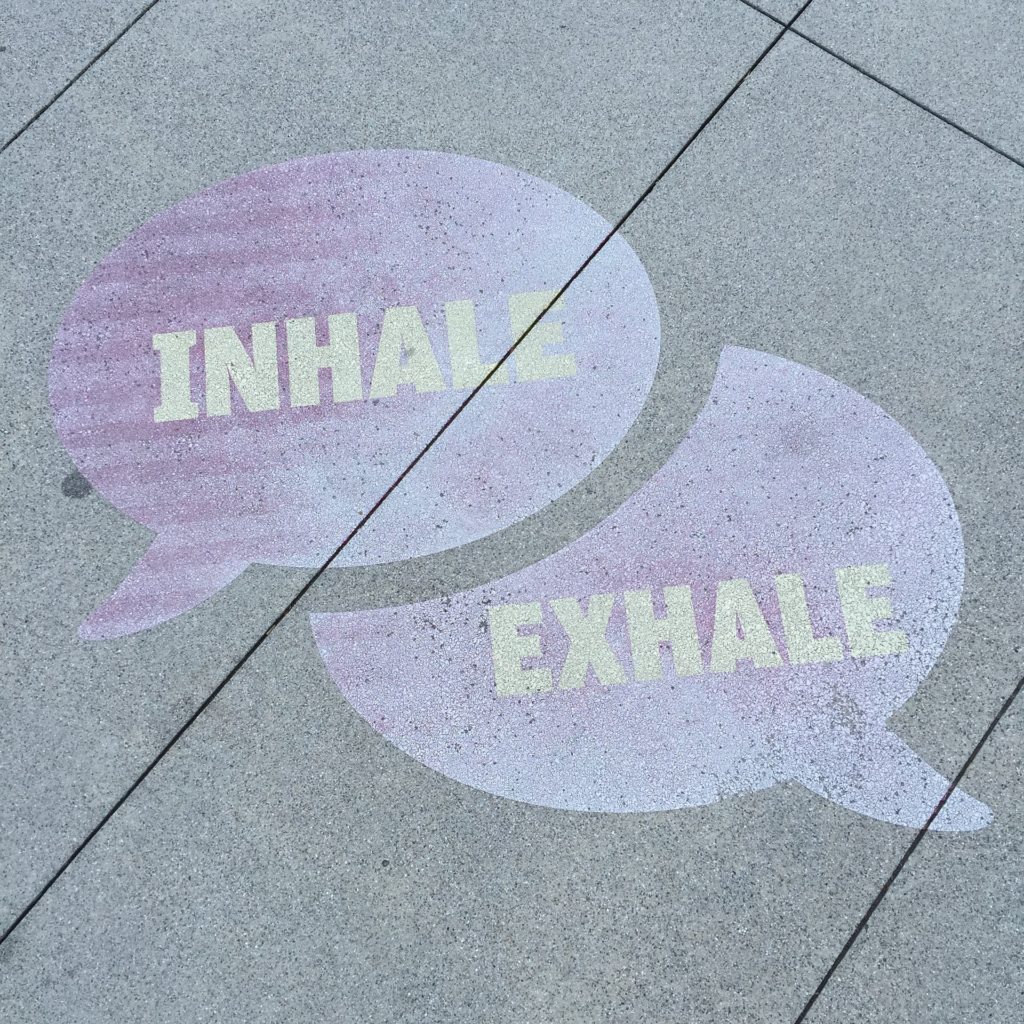Life begins and ends with breath.
As newborns our lives outside the womb begins with our first breath and the powerful lungs we have that give our vital organs the oxygen we need to survive.

One of my favorite yoga teachers always starts his class with a simple reminder…
“Please breath.”
It’s a simple yet remarkable reminder for all of us. I invite you to take a moment and take a deep inhale and a deep exhale.
How do you feel now?
Taking life force for granted
I often take my breath for granted.
Since breathing is a natural bodily function like blinking or swallowing, I don’t think very much about it.
Yet, oftentimes I feel like my breath is constricted, shallow, short and tight…as if I’m struggling to breath even though there’s nothing constricting my airway.
Stress and breathing
Generally when I’m stressed, anxious, worried or frustrated I notice that my breathing is constricted, and sometimes I unintentionally hold my breath.
Sadly, when I need to breath the most due to distress, I am subconsciously holding onto it for dear life, somehow my body thinks it is is the only thing I can control.
Do you notice that your breathing is more shallow when you’re stressed? There’s actually a reason for this.
When we’re stressed, our sympathetic nervous system is activated and our body goes into a survival “fight or flight” mode because it’s preparing us to respond to some type of threat. However, our body was not designed to remain in this sympathetic response mode for a long period of time since it drains a lot of our bodies resources.
Overtime, if our sympathetic nervous system is constantly activated, we are under chronic stress and our physical and emotional health is negatively impacted. On the other hand, if we slow down our breathing, our parasympathetic nervous system is activated and helps regulate our emotions.
Control and loss of control
Ultimately in life we have little to no control over what happens. This lack of control and uncertainty is uncomfortable. For some people, it causes feelings of anxiety, fear, depression and even panic.
We simply cannot control other people’s behaviors, actions or reactions. We can not control our natural environment, the weather, what is going on in our surroundings or the future. Quite honestly, there is really nothing we can control in our life.
Except one small thing…we can learn to breath correctly.
Learning to breath correctly
Learning to breath correctly and appropriately is probably one of the best techniques you can learn to effectively reduce your stress.
“Please breath” is a sweet reminder that we can control the depth, the expansion, the sweet deep inhale and the sweet deep exhale of our breath-our life force.
“Deep breathing brings awareness which can help us to breathe mindfully, noticing that life is a thread of moments, woven together that come and go. It can help intense sensations, experiences, and emotions feel less threatening.”
Julie Fraga, clinical psychologist
When we learn to bring our attention to our breath, something magical happens.

Our fears, worries, anxiety and sense of panic slowly dissipate. All our energy is focused on the inhale and exhale and the beauty that breathing provides for us…a feeling of quiet, slowing down, calm and being at peace.
My yoga teacher said that each of us is born with a certain number of heart beats. How I interpret this is that we live our life growing, moving and learning. Meanwhile, our heart is beating a steady rhythm, never failing us.
At some point our heart will stop and life as we know it will cease to exist. The soft pitter patter of our life force will no longer chime and we will die. That thought is unpleasant, but true.
We cannot control the number of heart beats we are given nor can we predict when our heart will stop. But we can learn to control one thing…our breath.
It takes time to learn how to breath correctly, since we are not actually taught this anywhere.
Diaphragmatic breathing, or deep breathing, is breathing that is done by contracting the diaphragm, a muscle located horizontally between the thoracic cavity and abdominal cavity. Air enters the lungs and the chest rises and the belly expands during this type of breathing.
“Diaphragmatic breathing can lower blood pressure, reduce heart rate, relax muscles, decrease stress, and increase energy levels.”
Rachel Rifkin
It takes a lot of practice and in the beginning it feels odd. I promise that if you keep practicing how to breath deeply, you will get better at it and it becomes more natural.
Wrap-up
Our life begins with breath and we so often do not learn to breathe correctly. It is vital for us to take time to breathe and slow down as part of our self-care.
Learning to breathe correctly will help reduce your stress by activating your parasympathetic nervous system. You will feel calmer, more relaxed and able to respond rather than react to a situation.
Breathing correctly is a simple activity, yet takes regular practice.
Please breath.
Let me know in the comments below what difference mindful breathing made for you to reduce your stress. How often did you practice breathing? Did you notice any changes in your body? How long did it take you to notice any changes?




